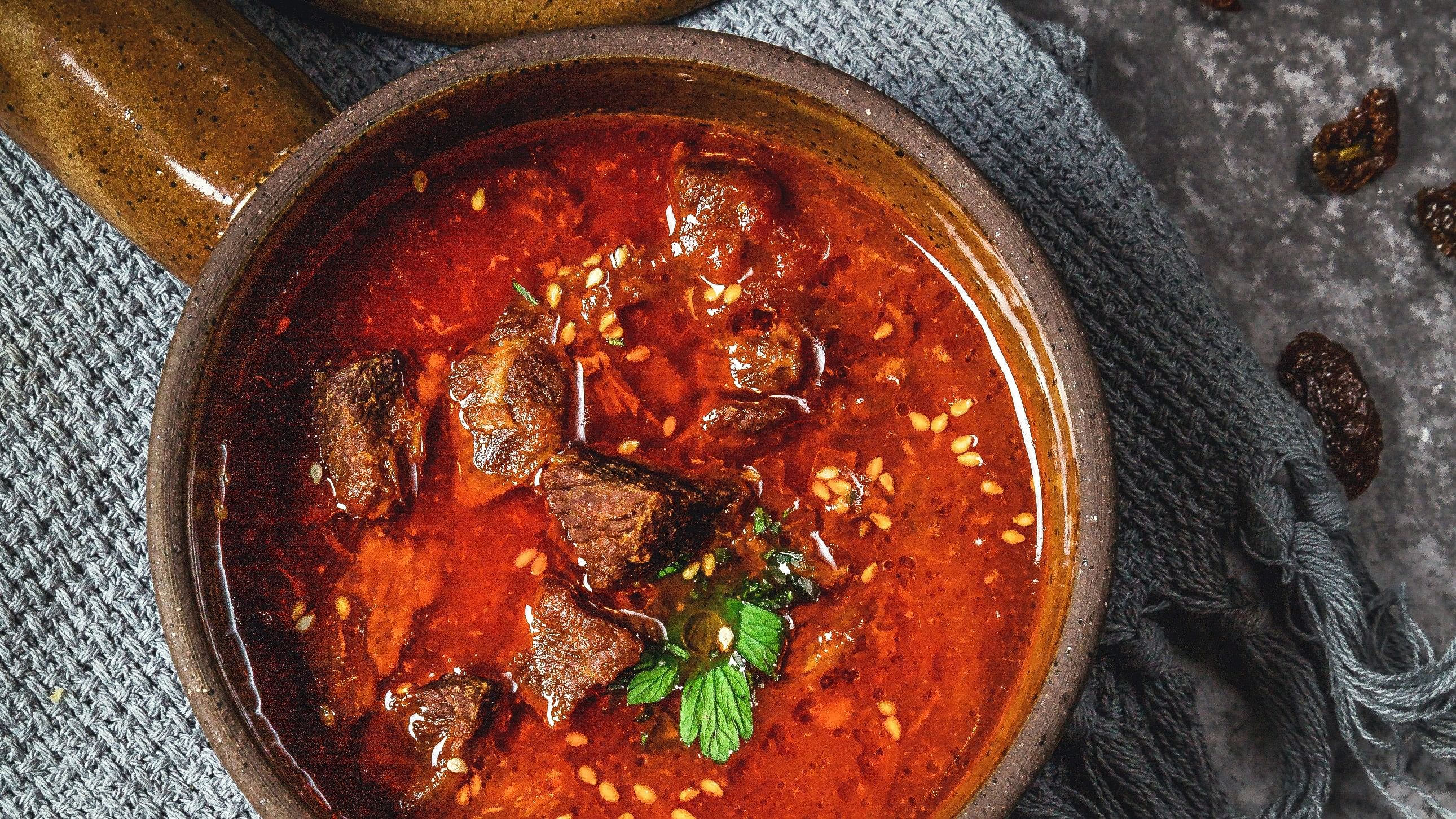
Vindaloo.
Credit: Unsplash Photo
Known multifariously as samusa in Myanmar, somsa in Central Asia and sambusak in the Middle East, the Indian samosa is what you could truly call a desi culinary emissary. A triangular pastry wrapped around a spicy meat or vegetable filling and then deep fried to golden brown perfection, the samosa is a well-travelled snack.
With colonial breezes blowing over from the erstwhile Portuguese colonies of Goa to Mozambique along Africa’s mighty east coast and vice versa, it’s no surprise that the samosa, along with a host of other dishes, finds itself caught in this colonial crosswind.
The local fare
Snack Attack on History channel shows us that India managed to forge strong bonds with Mozambique during the spice trade route days. In fact, it’s believed that there are more Indians living in Mozambique today than in any other African country.
Called chamussa in the local Swahili-Portuguese mixed dialect, these are a popular street food sold on every corner in Mozambique’s capital of Maputo. Just like in India, the snack can be stuffed with either minced meat (generally lamb) or a spicy potato and peas mixture.
Two other common vestiges of the colonial connection are the Portuguese staples of Pao and Rissois de Camarao. Found in both Goa and Mozambique, they are both super delicious and bind the two very distinct cultures together in the best way possible. The former is the de facto small, soft bread bun used to mop up a range of curries. Such as the famous street side Goan dish of Ros Omelette (an omelette slathered with a mildly spiced coconut-based curry) sold from Margao to Mapusa.
The latter, however, is a bit of a niche snack in both Goa and Mozambique. What a Rissoi basically is is a croquette fashioned in a half-moon shape from wheat dough stuffed with a creamy white sauce made with prawns. These are then deep-fried and served with a chilli-based sauce. In Mozambique, that would be the fiery piri-piri sauce. Another snack item that’s found in both Mozambique and Goa are Fofos which have origins in Portugal.
These are zeppelin-shaped croquettes of white fish (generally cod) that is first boiled, then de-boned, mashed with boiled potato and dipped in beaten egg, before being coated in bread crumbs and shallow or deep-fried. And yes, once ready to eat, a Fofo is dipped in the aforementioned orange-red-hued piri-piri sauce.
Hot & spicy
This very same piri-piri sauce finds itself anchoring perhaps the most famous Mozambican dish — piri-piri Chicken Asado. This spicy sauce which means “pepper-pepper” in Swahili is a melange of lime juice, garlic, vinegar and paprika. But the key ingredient is bird’s eye chilli found in both Africa and Southeast Asia, particularly Thailand.
Served with sautéed vegetables and fried potatoes, this roast chicken is almost the Mozambican national dish and is as ubiquitous as it is delicious. In Goa, a version of this dish called Cafreal Assad has an interesting underpinning. It is widely believed that black Mozambican labourers (called Cafirs by the Portuguese and later as Hampris by the Goans), who still have descendants living in Goa, brought with them the recipe for this slightly green-tinged roast chicken that’s now a firm favourite in Goa.
Conversely, a firm favourite in Mozambique today is the Goan-style Pork Vindaloo. Once a Portuguese dish called Carne de vin d’alho or preserved (pork) meat with wine and garlic, it became an Indian-style curry called Vindaloo during Goa’s long Portuguese rule that lasted from 1510 to as recently as 1961! During these 450-odd years, the wine was replaced by (the more easily available in India) sur or coconut toddy.
This was in addition to a whole cabinet of spices like Kashmiri chillies and peppercorns that were introduced to the rather bland Portuguese dish that sailors used to eat on ships on their long journeys. And while the vast Indian Ocean might separate the two colonial cousins of Mozambique and Goa, it is a common culinary legacy that makes the distance seem infinitesimal. With every familiar tasting bite of a samosa and a morsel of Chicken Cafreal bridging the gap...